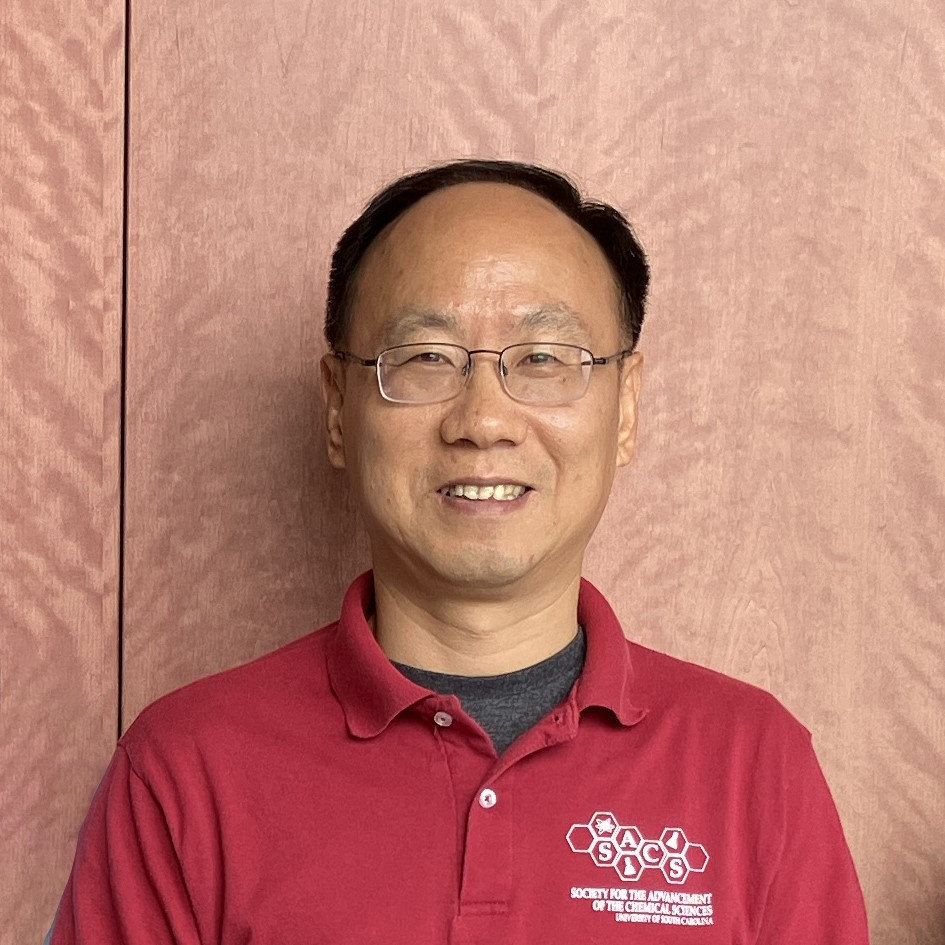Plastics are everywhere, from cutlery to medical equipment, toys to technology. They’re found on grocery store shelves, in auto bodies and floating in the oceans, leaving a lasting impact on the world.
Chuanbing Tang, a Carolina Distinguished Professor in USC’s Department of Chemistry and Biochemistry, is leading an effort to develop bioplastics, a plastics alternative with a sustainable pathway to be recycled and biodegraded.
Tang directs the new NSF Center for Polymers for a Circular Economy, funded by a grant from the National Science Foundation’s Centers for Chemical Innovation (CCI) Program. In this interview, Tang explains the plastics crisis and how research and development of bioplastics will help.
LE: Why is plastics research so important in the big picture?
CT: Today we are facing a plastic crisis because plastics are essential, but they also create a lot of waste—whether it’s carbon emissions when they’re made, products that can’t be recycled or single-use items that end up in landfills.
Worldwide, scientists are working to develop new plastics that will be better for the environment and easier to recycle. While biodegradable options have been found, we also need plastics that can hold up to long term use.
LE: How is the NSF Center for Polymers for a Circular Economy approaching this problem differently?
CT: Our center aims to create new polymers for plastics that will not be made from petroleum, but from CO2 and renewable resources, particularly waste streams. We want to avoid using a source that would damage the landscape or compete with valuable food supplies.
One waste source we are considering is used cooking oil, which we could get from places like restaurants, factories and even the cafeterias at USC.
LE: How do you turn something like cooking oil into plastic?
CT: Using the fats in cooking oil, we break down the triglycerides to monomers, which will be the building blocks for plastic polymers. Our goal is to identify the chemical reactions needed to create these polymers.
In the lab, we test the properties of our new polymers, creating samples in different forms, like thin plastic film and small items using 3D printing. We need the new plastics to have the same, if not better, functionalities as the existing petroleum-based plastics.
LE: How long will it take to see your research result in new plastic products?
CT: This will be a long process, and we are just at the beginning for the NSF grant. During Phase 1 of this project, we are focusing on the chemistry and learning how to create new plastics that meet the needs of industries and consumers.
In a little over two years, we hope to win the Phase 2 award, which will allow us to grow the center and continue our work at a much larger scale. If we are successful, many years from now, we will be working with industries to use our new plastics in manufacturing.
LE: Why is it important for USC to be involved in this research?
CT: Our center in the College of Arts and Sciences is currently the only active Center for Chemical Innovation from an EPSCoR state, which is an important partnership with the NSF. Four other institutions from across the country are collaborating closely with the South Carolina team on this work. USC’s investment in this center has the potential to make our chemical sciences program a national leader in sustainability research.
LE: What opportunities will this create for students?
We hope to bring more students at all levels into this work. With this center in the College of Arts and Sciences, graduate and doctoral students will have a unique opportunity to contribute to national research on the cutting edge of new plastics technology and development. This will prepare them for jobs not only in academic research but in industry. In addition, we are actively recruiting undergraduate students to participate, which will provide hands-on experience with chemistry and biochemistry research with a real-world application.
As we conduct this research, we will also be doing outreach to our community and beyond, educating the next generation of scientists to continue working toward a more sustainable future.
Students interested in learning more can reach out to Sylvia Atim.

